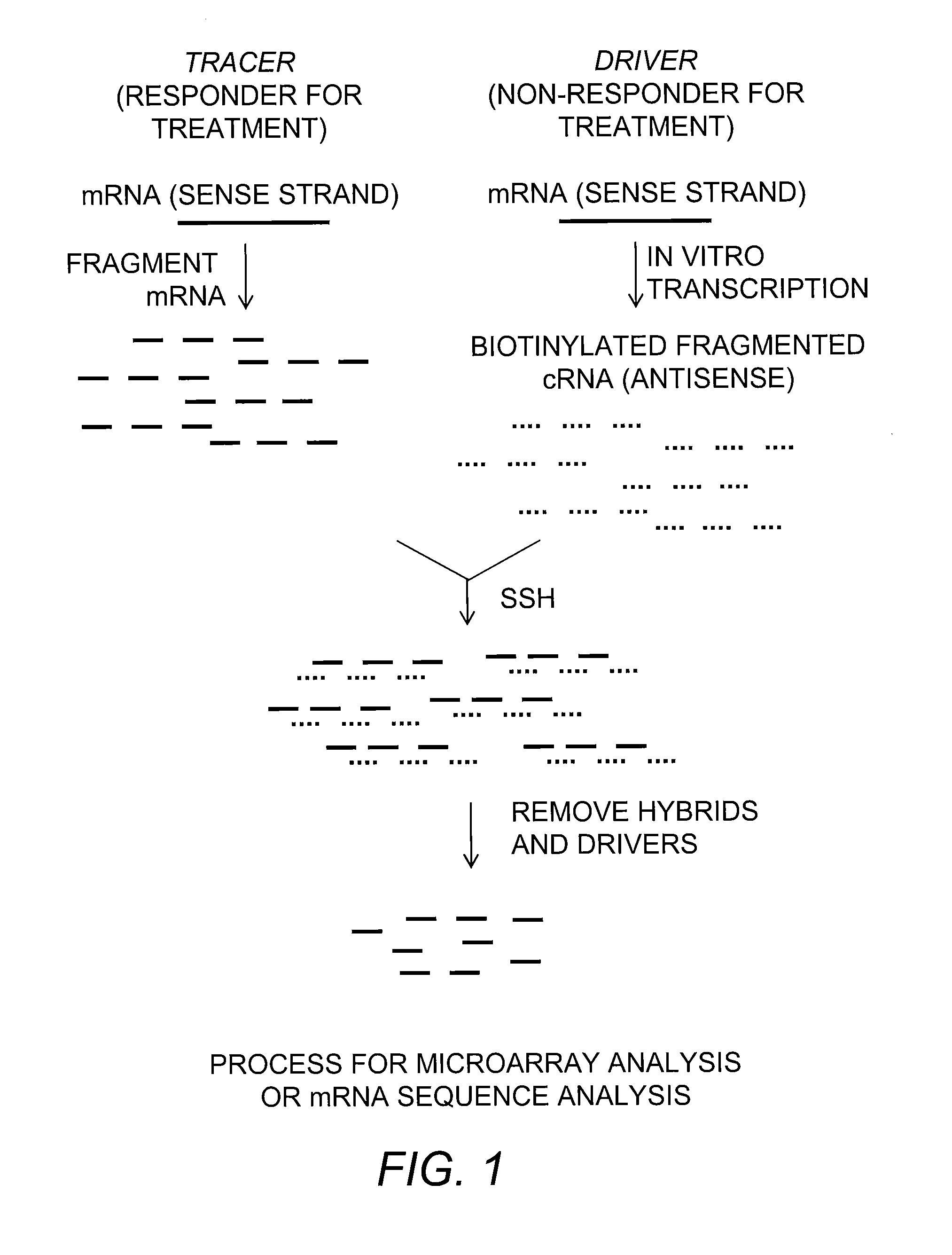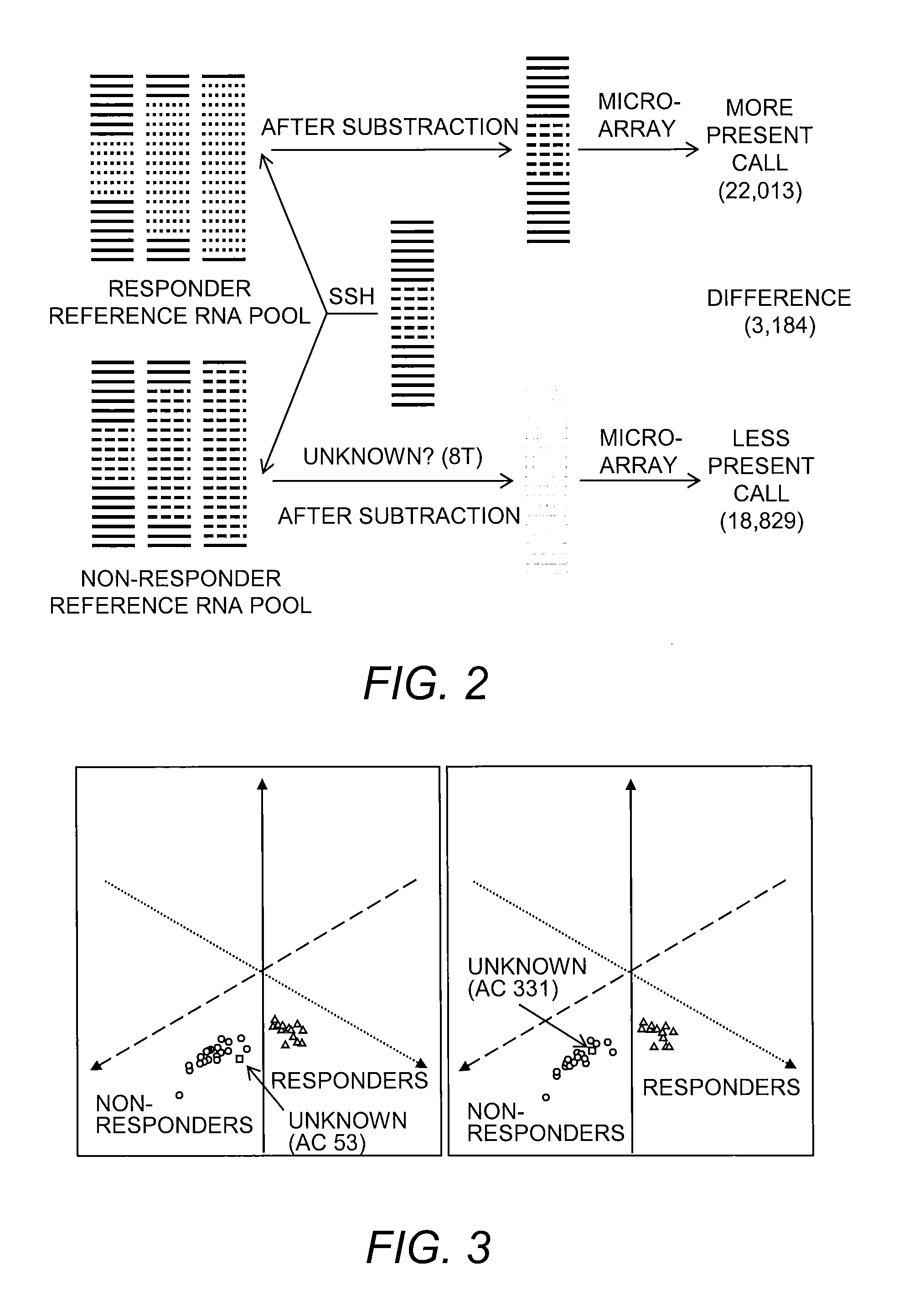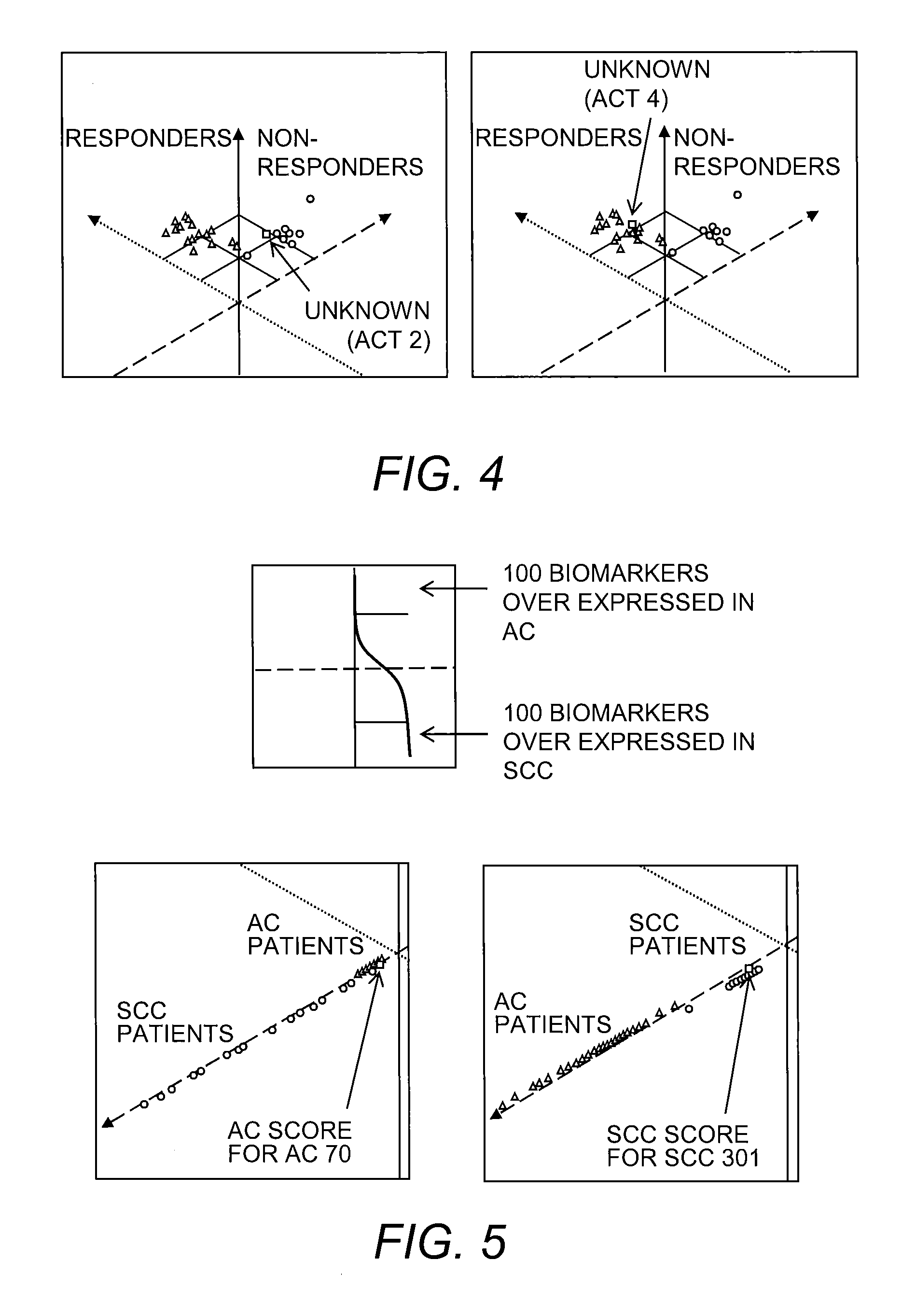Method and kit for classifying a patient
a technology for identifying patients and kits, applied in the field of method and kit for identifying patients, can solve the problems of false positive and unreproducible, the method remains complicated for identifying differentially expressed transcripts, and the advantages of high sensitivity of ssh are sacrificed by conventional combination methods
- Summary
- Abstract
- Description
- Claims
- Application Information
AI Technical Summary
Benefits of technology
Problems solved by technology
Method used
Image
Examples
example 1
Materials and Methods
[0044]Tissue Specimens.
[0045]Patient specimens and clinical data were obtained from Fox Chase Cancer Center, Co-Operative Human Tissue Network, NCI. The samples obtained for the present study were approved by the Internal Review Board at the UMDNJ-Robert Wood Johnson Medical School, New Brunswick, N.J.
[0046]RNA Extraction.
[0047]RNA was isolated from human tissue samples using a tissue pulverizer (Cole-Palmer). Approximately 25 mg tissue blocks were pulverized using a tissue pulverizer and total RNA was extracted using TRIZOL reagent (INVITROGEN) according to the manufacturer's instructions. The RNA was purified using the RNEASY mini kit (QIAGEN) and quality was examined with RNA 6000 Nano assay kit and the 2100 Bioanalyzer (Agilent).
[0048]Preparation of Reference RNA pool from Responder and Non-responder Patients.
[0049]Total RNA from non-responder patients was pooled to obtain “non-responder reference RNA pool.” Similarly, total RNA from responder patients was p...
example 2
Efficiency of SSH and Hybridization to Oligonucleotide Microarray
[0056]SSH.
[0057]A simple one round subtraction hybridization method was developed that involves in vitro transcription-based amplification to obtain biotinylated cRNA driver (FIG. 1). Initial subtractions were carried out with individual tracer mRNA against individual driver RNA to maintain the simplicity of the method. The method was composed of synthesizing biotinylated antisense RNA (cRNA) from a target tissue (Non-responder for surgical treatment: Lung cancer patient who had recurrence within 5 years after surgical resection) using in vitro transcription. The cRNA was fragmented to achieve specific hybridization kinetics. In the next step, mRNA isolated from a responder patient (Responder for surgical treatment: Lung cancer patient who did not have recurrence within 5 years after surgical resection) was hybridized with the fragmented cRNA. After hybridization, the biotinylated cRNA fragments and the hybridized targ...
example 3
Predicting Surgical Treatment Response
[0064]RNA Reference Pools.
[0065]The patients were separated into two groups based on their clinical outcomes.
[0066]Group 1: Non-responders for surgical treatment: Lung cancer patients who had recurrence within 5 years after surgical resection.
[0067]Group 2: Responders for surgical treatment: Lung cancer patients who did not have recurrence within 5 years after surgical resection.
[0068]Two reference RNA pools were prepared for the prediction studies as follows:
[0069]Non-responder reference RNA pool: Reference RNA obtained by pooling total RNA obtained from non-responders of surgical treatment.
[0070]Responder reference RNA pool: Reference RNA obtained by pooling total RNA obtained from responders of surgical treatment.
[0071]The quality of reference RNA was tested using HU 133 plus 2.0 arrays, and the results of scatter plot analyses are shown in Table 2. The results indicated the presence of comparable transcript levels in both reference RNA pools...
PUM
 Login to View More
Login to View More Abstract
Description
Claims
Application Information
 Login to View More
Login to View More - R&D
- Intellectual Property
- Life Sciences
- Materials
- Tech Scout
- Unparalleled Data Quality
- Higher Quality Content
- 60% Fewer Hallucinations
Browse by: Latest US Patents, China's latest patents, Technical Efficacy Thesaurus, Application Domain, Technology Topic, Popular Technical Reports.
© 2025 PatSnap. All rights reserved.Legal|Privacy policy|Modern Slavery Act Transparency Statement|Sitemap|About US| Contact US: help@patsnap.com



